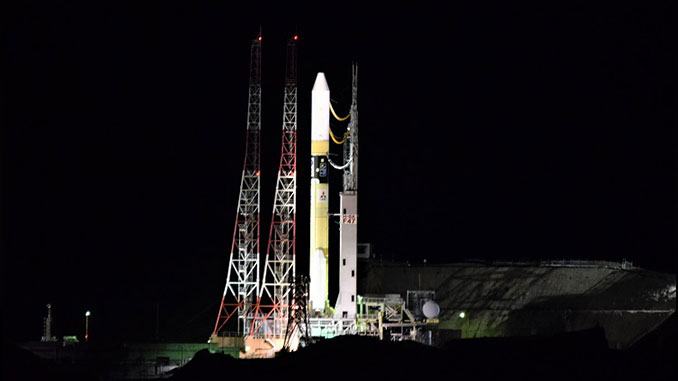Update 8:15 p.m. EDT (0015 UTC): The launch has been scrubbed due to upper level winds being out of limits. A new launch date has not yet been set.

A next-generation X-ray space telescope and an experimental lunar lander are poised for launch Sunday from Japan. An H-2A rocket is scheduled to liftoff from the Tanegashima Space Center at 8:26 p.m. EDT (9:26 a.m. local time / 0026 UTC).
The X-ray Imaging and Spectroscopy Mission, or XRISM for short, pronounced as ‘crism’ by the mission team, is a collaboration between the Japanese Space Agency JAXA, NASA and ESA, the European Space Agency. X-ray telescopes need to be placed in space as the Earth’s atmosphere blocks the wavelength. X-ray observations allow astronomers to study some of the hottest and largest objects in the Universe and the most powerful gravitational pulls, like black holes.

“Some of the things we hope to study with XRISM include the aftermath of stellar explosions and near-light-speed particle jets launched by supermassive black holes in the centers of galaxies,” said Richard Kelley, NASA’s XRISM principal investigator at the Goddard Space Flight Center in Greenbelt, Maryland. “But of course, we’re most excited about all the unexpected phenomena XRISM will discover as it observes our cosmos.”
There are two main instruments aboard XRISM. Resolve, which will perform X-ray spectroscopy, that is cooled close to absolute zero by liquid helium, and Xtend, a camera that will image the cosmos with X-ray vision.

Also onboard the H-2A rocket is SLIM, short for Smart Lander for Investigating Moon. It’s a lightweight 700kg spacecraft designed to demonstrate navigation systems for pinpoint lunar landings in rugged lunar terrain. The craft will use a fuel-saving trajectory that takes about four months to reach the Moon.
